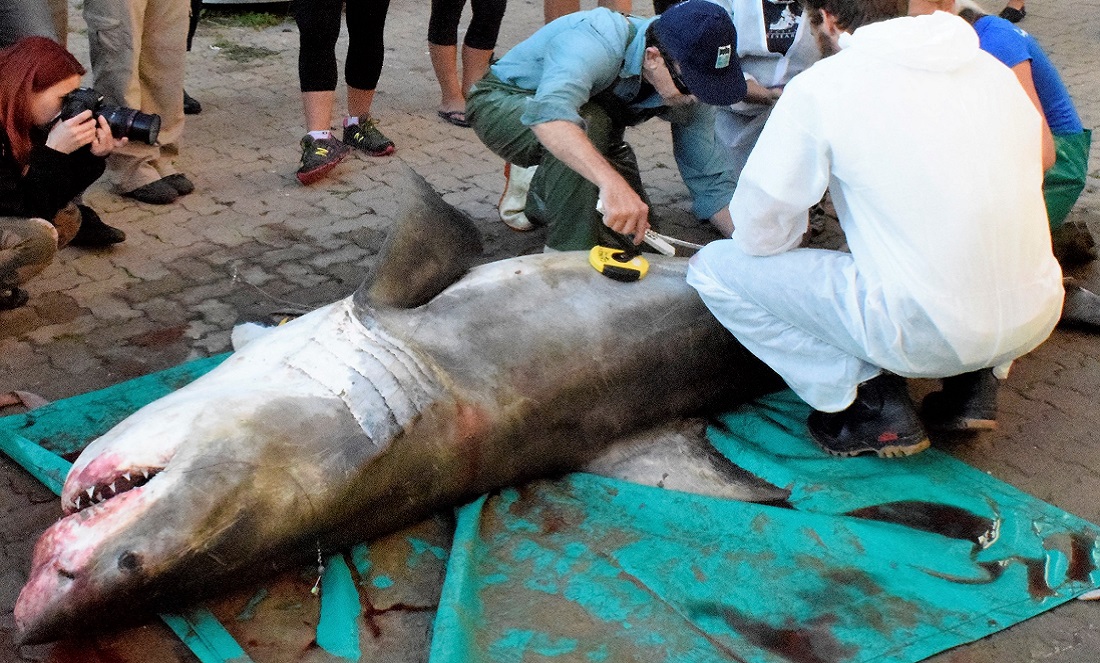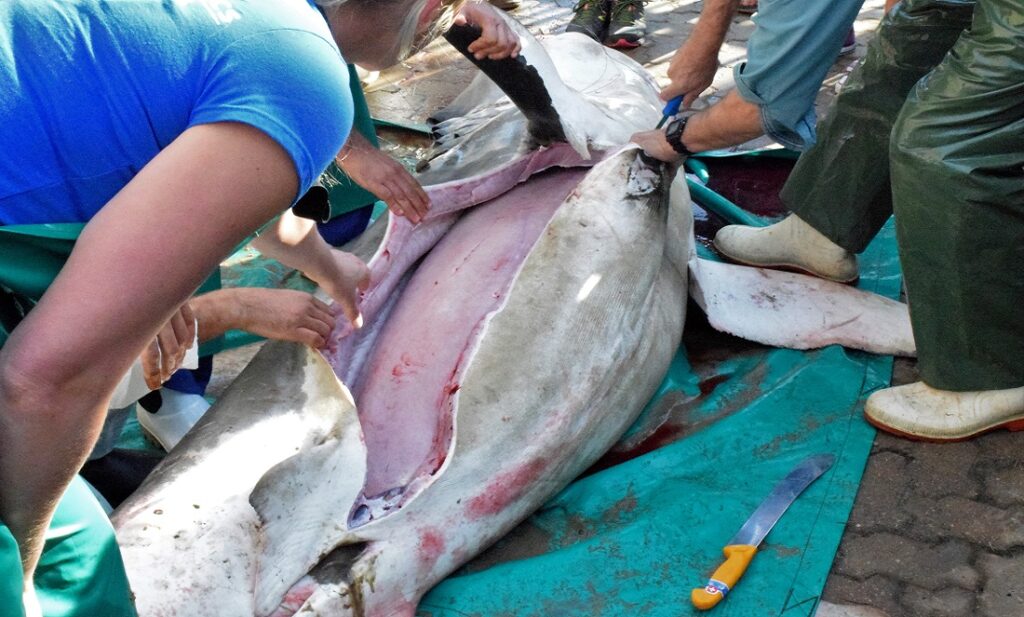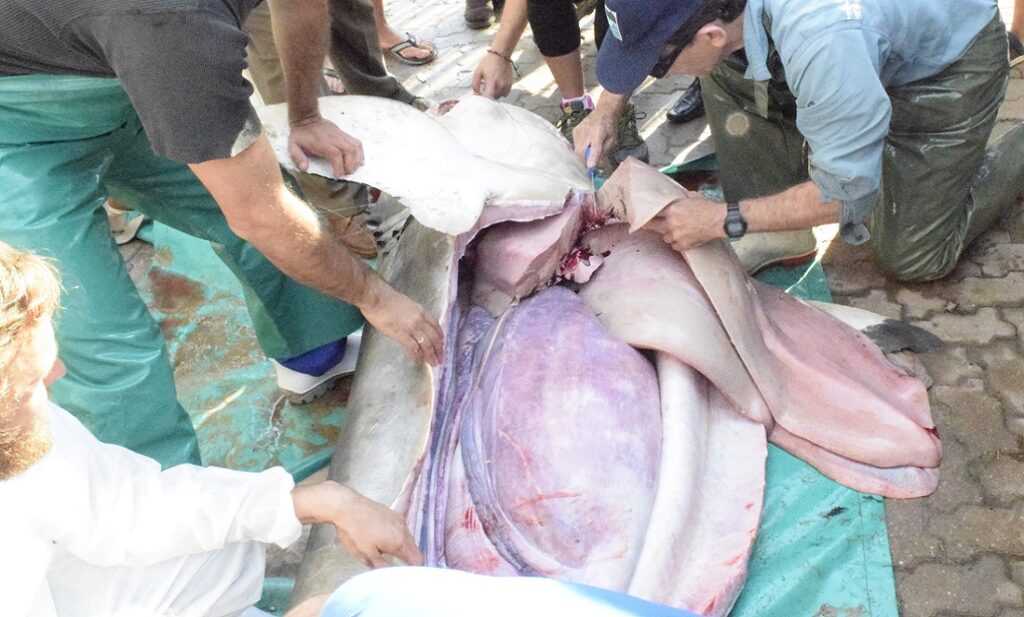On a cold morning in Mossel Bay, South Africa, researchers, interns and members of the public gathered for a unique experience. They came to witness the dissection of a 3.2 meter great white shark.
The shark had been the fourth in a spate of recent shark deaths. In the previous weeks, three other sharks washed up in Gansbaai, 300km away.
Investigations determined they were the rare victims of orca attacks. When Oceans Research scientists and interns heard of this, many assumed this latest shark had also fallen victim to orcas.
But early investigation showed this wasn’t the case.
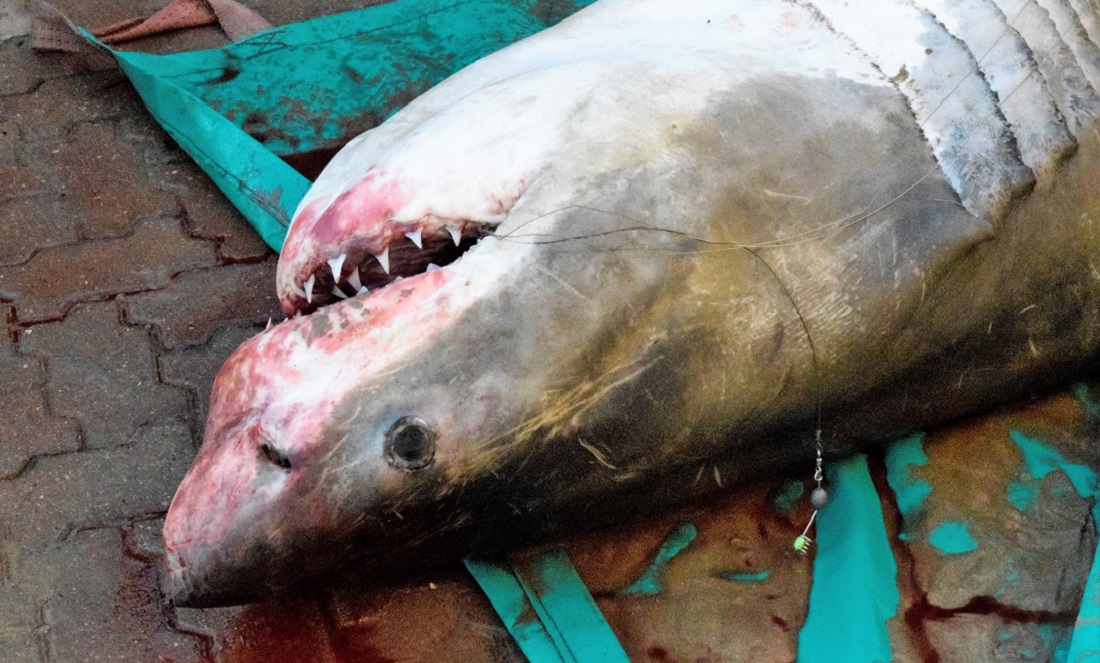
Another killer?
The victims of the orcas had visible wounds and missing organs. This new shark washed up whole.
It had fishing line trailing from its mouth, so many people suspected illegal fishing.
Dr Enrico Gennari was given permission by the government to dissect the shark. He quickly organised its removal from the beach and put together a team to conduct the dissection.
The main goal of the dissection was to advance scientific understanding of great white sharks. Additionally the dissection would help to determine the cause of death.
By conducting the dissection in a public venue, the event would help to educate the public as well.
Dr Gennari, Dr Malcolm Smale and Dr Alison Towner performed the dissection with the help of field specialists from Oceans Research.
Taking measurements
The first step is a morphometric assessment. This means taking a huge number of measurements all over the shark’s body.
Scientists rarely get the opportunity to get detailed body measurements from sharks. This is because they move fast, surface only briefly and rarely wash-up on beaches.
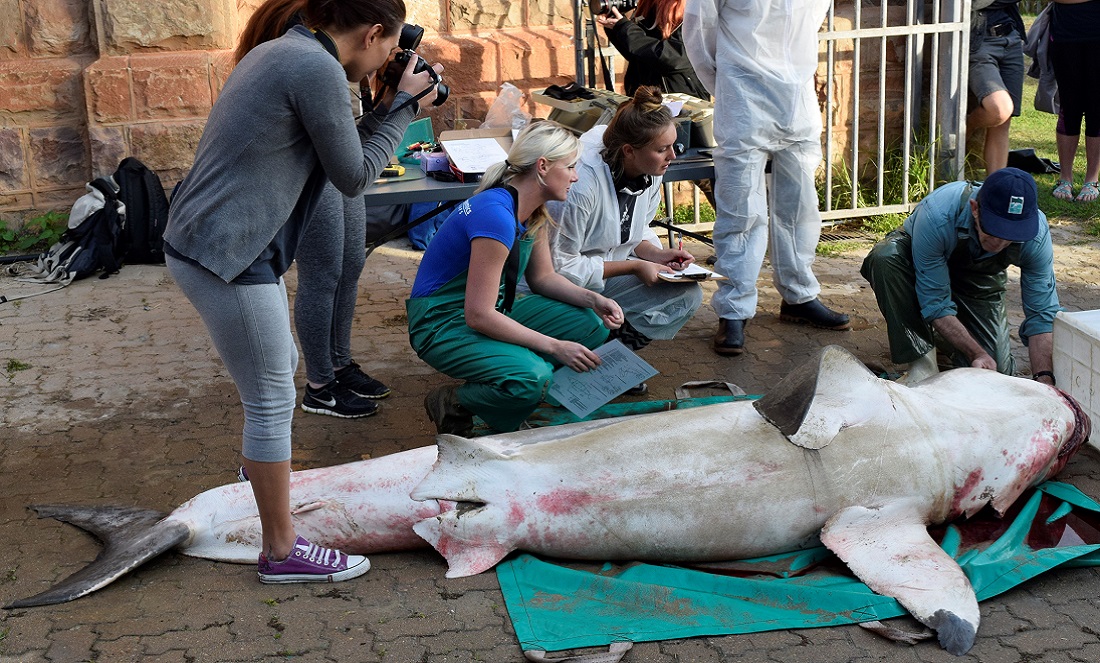
So why do these measurements matter? Well, they help us understand the evolution of a species.
In 2010, scientists measured the variation in position teeth from great white sharks and two extinct shark species as well as their serration pattern and growth rates. Using this data, they determined that great white sharks have teeth that are more similar to an extinct group of mako sharks than to megalodon.
This evidence suggested that great whites may have evolved from this extinct group of mako sharks.
Shark measurements can be useful in other ways too. We can compare the data collected with data from other sharks of different ages and genders. This helps scientists build up a bigger, better picture of how sharks grow and mature.
Beneath the skin
The second step of the dissection is the internal examination of the shark.
To begin with, the examiners made a large cut along the shark’s abdomen. After lifting back the thick layer of skin and tissue, the shark’s liver became visible. Sharks’ huge livers are rich in nutritious squalene, which is likely why they were eaten up during the orca attacks.
The liver of a great white shark is also a good indicator of the animal’s health. If a shark is under long term stress, the condition of the liver will show it. This shark’s liver was large and unblemished, suggesting the animal was very healthy when it died.
Some hormones in the blood are a good indicator of stress. Examiners took samples to test for stress hormones. High levels of stress hormones were detected lending weight to the theory it was a victim of illegal fishing.
The examiners then moved on to the stomach contents.
The first thing removed from this shark’s stomach was the remains of a seal. This wasn’t surprising, because there was a seal colony close by.
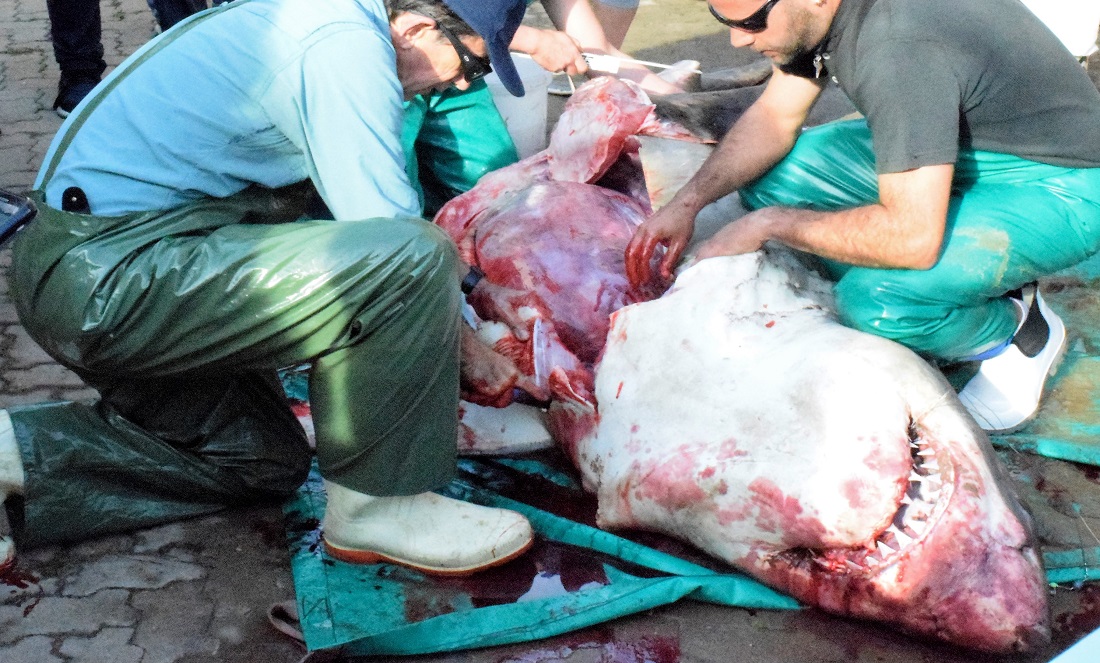
What was more damning was the fishing hook they found in the stomach. It was still connected to the line seen trailing from the shark’s mouth.
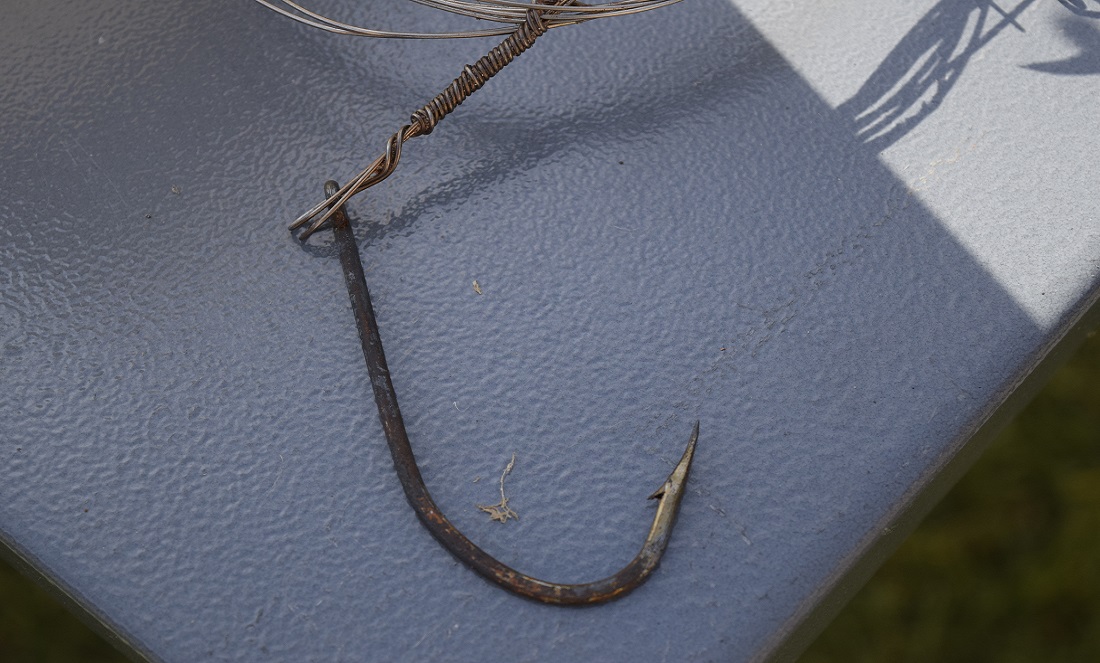
Cause of death
Acheley Nortje is a marine field specialist and an experienced fisherman. He analysed the fishing gear found in shark’s stomach.
He explained to the public that some people in the fishing community don’t believe sharks are endangered and that catching them carries a certain prestige among their peers.
The type of line and hook used suggested this angler was specifically targeting great white sharks. Red marks around the shark’s nose were likely caused by the steel line scraping across its skin as it thrashed.
Acheley explained that great white sharks need water moving over their gills to breathe, and they get tired quickly. The damage to the fishing gear suggested the shark got hooked and fought until the line broke.
The shark would have broken free, but its escape left it too tired to swim. This meant it couldn’t keep water moving over its gills and couldn’t breathe.
The high levels of stress hormone detected indicated the shark’s heart would have been racing at the time it got caught. This made things worse while it was already struggling to get enough oxygen.
Cause of death? Exhaustion and stress caused by illegal fishing.
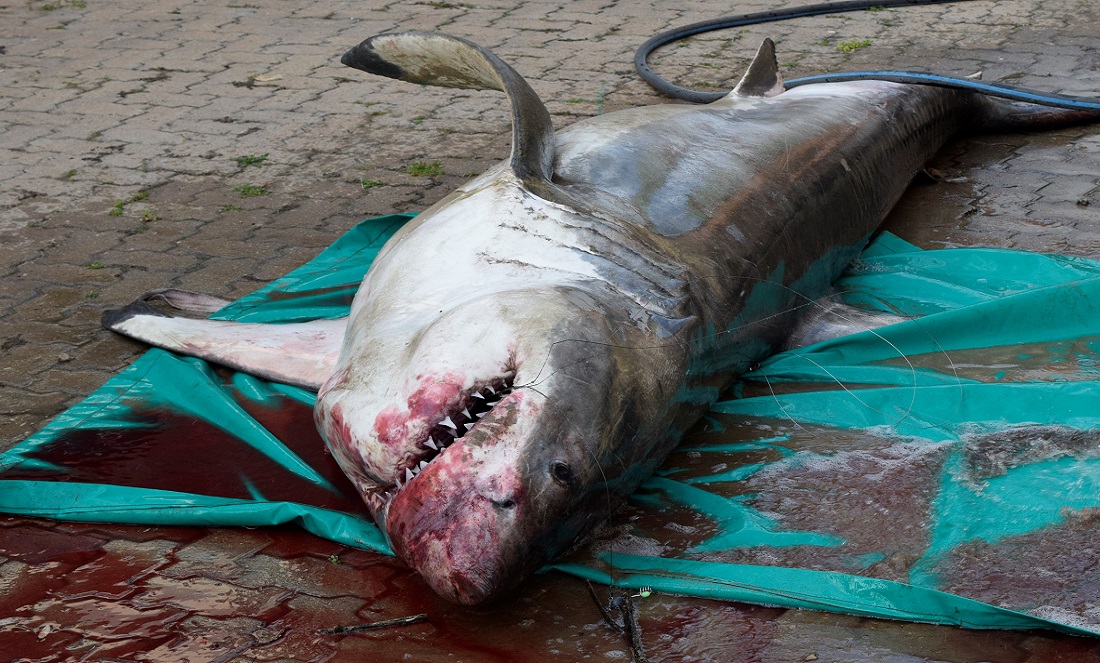
Did any good come from it?
As Enrico told me, “It is a very sad situation, but as a scientist, we try to make the most of it.”
The death of the shark was tragic, but a dissection allowed some good to come out of it.
By holding the dissection in a public area, the public were able to watch and ask researchers questions about great white sharks.
This bringing together of experts and the public was a great opportunity for community education.
And on the scientific front, researchers were able to collect a huge amount of data from the shark. This will no doubt contribute to improving our understanding of this misunderstood animal.



